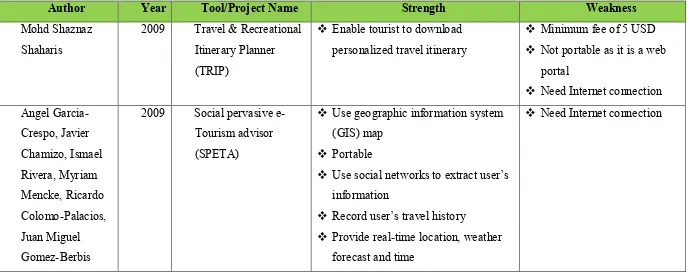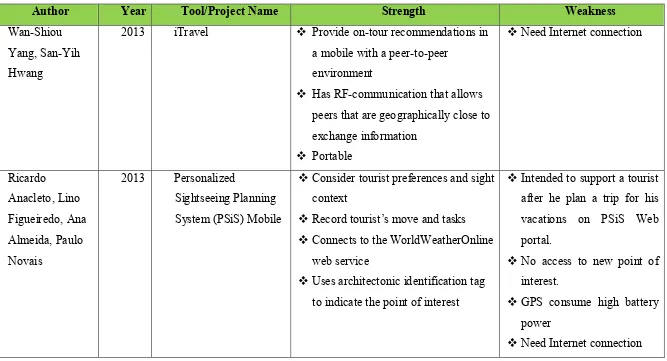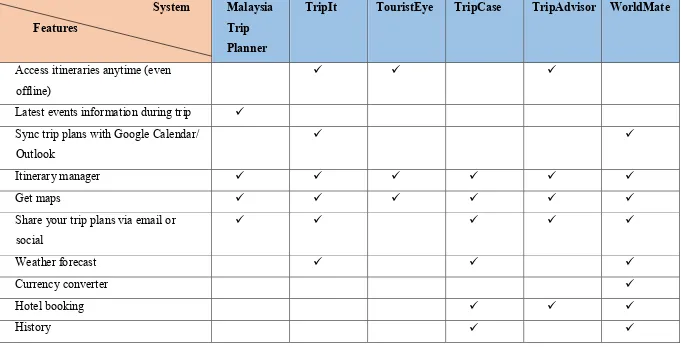MALAYSIA VACATIONS PLANNER (MVP)
NG SHI XIAN
JUDUL: MALAYSIA VACATIONS PLANNER (MVP)
SESI PENGAJIAN: 2013/2014
Saya, NG SHI XIAN mengaku membenarkan tesis (PSM/Sarjana/Doktor Falsafah) ini disimpan di Perpustakaan Fakulti Teknologi Maklumat dan Komunikasi dengan syarat-syarat kegunaan seperti berikut:
1. Tesis dan projek adalah hakmilik Universiti Teknikal Malaysia Melaka.
2. Perpustakaan Fakulti Teknologi Maklumat dan Komunikasi dibenarkan membuat salinan untuk tujuan pengajian sahaja.
3. Perpustakaan Fakulti Teknologi Maklumat dan Komunikasi dibenarkan membuat salinan tesis ini sebagai bahan pertukaran antara institusi pengajian tinggi.
4. ** Sila tandakan (/)
_______ SULIT (Mengandungi maklumat yang berdarjah keselamatan atau kepentingan Malaysia seperti yang termaktub di dalam AKTA RAHSIA RASMI 1972)
_______ TERHAD (Mengandungi maklumat TERHAD yang telah ditentukan oleh organisasi/badan di mana penyelidikan dijalankan)
_______ TIDAK TERHAD
_________________________ __________________________
(TANDATANGAN PENULIS) (TANDATANGAN PENYELIA)
Alamat tetap:
25, LEBUH RAPAT BARU 16B, TAMAN LAPANGAN INDAH, 31350 IPOH, PERAK.
Nama Penyelia:
DR. SABRINA BINTI AHMAD
Tarikh:_________________ Tarikh: _____________________
CATATAN: * Tesis dimaksudkan sebagai Laporan Akhir Projek Sarjana Muda (PSM)
MALAYSIA VACATIONS PLANNER (MVP)
NG SHI XIAN
This report is submitted in partial fulfillment of the requirements for the Bachelor of Computer Science (Software Development)
FACULTY OF INFORMATION AND COMMUNICATION TECHNOLOGY UNIVERSITI TEKNIKAL MALAYSIA MELAKA
DECLARATION
I hereby declare that this project report entitled
MALAYSIA VACATIONS PLANNER (MVP)
is written by me and is my own effort and that no part has been plagiarized without citations.
STUDENT: _____________________________ Date: _____________
(NG SHI XIAN)
iii
ACKNOWLEDGEMENT
ABSTRACT
v
ABSTRAK
TABLE OF CONTENTS
DECLARATION... ii
ACKNOWLEDGEMENT ... iii
ABSTRACT ... iv
ABSTRAK ...v
TABLE OF CONTENTS ... vi
LIST OF TABLES ... ix
LIST OF FIGURES ...x
LIST OF ABBREVIATIONS ... xi
INTRODUCTION ...1
1.1 Project Background ... 1
1.2 Problem statements ... 2
1.3 Objective ... 2
1.4 Scope... 3
1.5 Project significance ... 3
1.6 Expected Output ... 4
1.7 Conclusion ... 4
LITERATURE REVIEW AND PROJECT METHODOLOGY ...5
2.1 Introduction ... 5
2.2 Fact and findings... 5
2.2.1 Domain ...6
2.2.2 Existing systems ... 11
2.2.3 Technique ... 12
2.3 Project Methodology ... 12
2.4 Project Requirements ... 14
2.4.1 Software Requirement ... 14
vii
2.4.3 Other requirements ... 15
2.5 Project Schedule and Milestones ... 15
2.6 Conclusion ... 16
ANALYSIS ... 17
3.1 Introduction ... 17
3.2 Problem Analysis ... 17
3.3 Requirement Analysis ... 18
3.3.1 Data Requirement ... 18
3.3.2 Functional Requirement ... 19
3.3.3 Non-Functional Requirements ... 22
3.4 Conclusion ... 24
DESIGN ... 25
4.1 Introduction ... 25
4.2 High-Level Design ... 25
4.2.1 System Architecture ... 27
4.2.2 Entity Relationship Diagram (ERD) ... 29
4.2.3 User Interface Design ... 30
4.2.3.1 Navigation Design ... 34
4.2.3.2 Input Design ... 35
4.2.3.3 Output Design ... 35
4.2.4 Conceptual and Logical Database Design ... 36
4.3 Physical database design... 36
4.4 Conclusion ... 36
IMPLEMENTATION ... 37
5.1 Introduction ... 37
5.2 Software Development Environment Setup ... 37
5.3 Software Configuration Management ... 40
5.3.1 Configuration Environment Setup ... 40
5.3.2 Version Control Procedure ... 41
5.4 Implementation Status ... 43
5.5 Conclusion ... 44
TESTING ... 45
6.1 Introduction ... 45
6.2 Test Plan ... 45
6.2.1 Test Organization ... 47
6.2.2 Test Environment ... 47
6.3.1 Classes of tests ... 50
6.4 Test Design ... 51
6.4.1 Test Description ... 51
6.4.2 Test Data ... 51
6.5 Test Results and Analysis ... 52
6.5.1 Integration Testing Result Analysis ... 52
6.5.2 Regression Testing Result Analysis ... 54
6.5.3 Usability Testing Result Analysis ... 56
6.5.4 Compatibility Testing Result Analysis ... 56
6.6 Conclusion ... 57
CONCLUSION ... 58
7.1 Introduction ... 58
7.2 Observation on Weaknesses and Strengths ... 58
7.3 Proposition for Improvement ... 59
7.4 Contribution... 60
7.5 Conclusion ... 61
REFERENCES... 62
APPENDICES I ... 63
APPENDICES II ... 65
APPENDICES III ... 67
APPENDICES IV ... 73
APPENDICES V ... 81
ix
LIST OF TABLES
TABLE TITLE PAGE
Table 1: Comparing Selected Research Projects ... 8
Table 2: Comparison among the existing systems ... 11
Table 3: Software Requirement ... 15
Table 4: Hardware Requirement ... 15
Table 5: Functional Requirements of MVP ... 19
Table 6: Performance... 22
Table 7: Integrity ... 22
Table 8: Availability ... 23
Table 9: Security ... 23
Table 10: Scalability ... 23
Table 11: Table Planning a Vacation ... 35
Table 12: Output Design ... 35
Table 13: Type of version... 41
Table 14: Implementation Status ... 43
Table 15: Test Organization ... 47
Table 16: Test Environment ... 48
Table 17: Test Schedule of MVP ... 48
Table 18: Usability Testing Result ... 56
Table 19: Compatibility Testing Result... 56
Table 20: SWOT analysis ... 59
Table 21: State table... 68
Table 22: Area table ... 69
Table 23: Photo table ... 70
Table 24: Distance table ... 71
Table 25: Place table ... 72
Table 26: Test cases for Integration Testing ... 74
Table 27: Test cases for Regression Testing (1 Day) ... 82
Table 28: Test cases for Regression Testing (2 Days) ... 101
LIST OF FIGURES
DIAGRAM TITLE PAGE
Figure 1: Agile Software Development Model for MVP application ... 13
Figure 2: Use Case Diagram for MVP ... 20
Figure 3: Sequence Diagram for MVP ... 21
Figure 4: Class Diagram for MVP... 26
Figure 5: Model-View-Controller Architecture ... 27
Figure 6: Entity Relationship Diagram (ERD) ... 29
Figure 7: Main menu interface ... 30
Figure 8: Area selection interface ... 30
Figure 9: State selection interface ... 31
Figure 10: Origin destination interface ... 31
Figure 11: Number of visiting days interface ... 32
Figure 12: Number of hours per day interface ... 32
Figure 13: Holiday style interface ... 33
Figure 14: Itinerary result interface ... 33
Figure 15: Information for each place interface ... 34
Figure 16: List ... 34
Figure 17: Android Application Deployment... 39
Figure 18: Android Environment Setup ... 40
Figure 19: Version Control Procedure ... 42
Figure 20: Steps to create a test plan ... 46
Figure 21: Integration Testing Cycle 1 ... 52
Figure 22: Integration Testing Cycle 2 ... 53
Figure 23: Integration Testing Cycle 3 ... 53
Figure 24: Regression Testing Cycle 1 ... 54
Figure 25: Regression Testing Cycle 2 ... 55
Figure 26: Regression Testing Cycle 3 ... 55
Figure 27: Gantt chart of Project Activities ... 64
xi
LIST OF ABBREVIATIONS
ADT - Android Development Tools ERD - Entity Relationship Diagram GIS - Geographic Information System iOS - iPhone Operating System
MVC - Model-View-Controller
MVP - Malaysia Vacations Planner
N/A - Not Applicable
PSiS - Personalized Sightseeing Planning System POI - Point of Interest
CHAPTER I
INTRODUCTION
1.1 Project Background
Today, the growth of technology has lead into the development of many aspects, especially in tourism. Mobile technology is becoming vital for tourism business. Travelers are now using their smartphone’s Internet capabilities to help them gather holiday information and book tickets. However, planning a trip by your own is not easy. One needs to do a lot of research on particular travel area before they can plan their trip. This may use up a lot of time and cause burden for those who have no experience in planning a trip. As year 2014 is the nation’s biggest and grandest tourism celebration with Malaysia Truly Asia's, there is a need to develop a mobile application that will assist user to plan their vacation in Malaysia.
2
Besides that, all information provided in MVP is clear and concise. User will be able to obtain accurate and detailed information about the places that they are going to visit. For time-being, MVP will only cover the famous tourist attraction such as Penang Island. With the use of MVP, user is able to plan their vacation well and maximize the value of time spent in visiting places in Malaysia.
1.2 Problem statements
Travelling is getting popular among people. However, it is not easy to plan a trip as one must be fully prepared with research and planning process for each travel. It may cause burden for those who have no experience in planning a trip. Furthermore, the information obtained from Internet may not be sufficient enough to plan a trip. This eventually will cause a lot of problem for those who never visit Malaysia before and they might easily miss out great places in Malaysia. In addition, there is still lack of applications that ease the user in planning their trip according to states in Malaysia.
1.3 Objective
The objectives of this project are:
i) To ensure tourist can maximize the value of time spent in Malaysia with the optimal vacation plan
MVP is able to ease tourist’s job by planning their vacation according to the travel area and days spend in that particular location that they have selected. With MVP, tourist will not miss out any interesting places in Malaysia as all the interesting places are categorized according to state.
iii) To save tourist’s time on researching and planning a trip
Planning a trip by yourself is not an easy job. By using MVP, it will suggest a feasible itinerary once tourist has selected the travel area and days spend in that particular location. MVP helps tourist to save their time on researching interesting places in Malaysia.
1.4 Scope
User scope for this application is wide. There is no specific age or any restriction on the user. As long as the user’s goal is to plan their vacation well, any user can use this application.
1.5 Project significance
4
1.6 Expected Output
At the end of this development, this project will produce a tool, which is MVP mobile application that acts as a portable plan advisor to assist tourist to spend their time in Malaysia. Besides that, MVP also act as an information provider, whereby the application provides user with detailed information such as duration per places and transport mode on the attraction places in Malaysia. With MVP, user experience can be improved as the system will suggest the attraction places to visit once user has selected the travel area and the number of visiting days. With the use of MVP, it is believed that user will be able to plan a successful vacation and experience a memorable trip in Malaysia.
1.7 Conclusion
This chapter focuses on the project background, problems that are currently faced by user, objectives and scope of this project. The need to develop this application is also being emphasized in this chapter.
CHAPTER II
LITERATURE REVIEW AND PROJECT METHODOLOGY
2.1 Introduction
This section discusses the literature review and methodology used for this project. The field of this study is tourism. Generally, tourism covers a wide range of areas. However, this project will only focus on the trip planning. There are total seven research projects and six existing systems were chosen for the literature study. Comparisons are made to see the strengths and weaknesses of each existing research project.
The methodology section describes on how Malaysia Vacations Planner (MVP) adopts the agile methodology and it also explains about the reasons for choosing agile methodology. Besides that, the project requirements and project schedule are also included in this chapter.
2.2 Fact and findings
6
2.2.1 Domain
As the growth of technology has lead into the development of tourism, mobile technology has become vital for tourism business. Büyüközkan and Ergün (2011) stated that electronic tourism is an efficient marketing channel for the travel agencies. They explained that intelligent systems can help the online travel agencies to develop special services.
Nowadays, smartphones can support a variety of information services, whereby user can access to it anytime and anywhere. It is believed that smartphones are highly potential in influencing tourist’s experience. In the past research, Wang, Park and Fesenmaier (2012) revealed that smartphones can affect tourists’ behaviour and emotional states by addressing a wide range of information needs. They explained that the instant information support of smartphones enable tourists to solve problems in an effective way and also allows them to share their experiences.
With the rapid development of technology, advanced digital application was introduced to tourist. Bongiorno (2012) described that a portable device for planning a vacation or business travel itinerary starts with customizable itinerary templates that used a stored database of destination information, including a country's regions, tourist sites, and other sites of interest location. With the Internet’s capability, tourist can also obtained reservation-specific information for air-travel, hotels, and events. He explained that the software is able to assist tourist by providing cueing of itinerary segments, together with directions.
Vansteenwegen, Souffriau, Berghe and Oudheusden (2011) presented the City Trip Planner. They explained that this tourist expert system allows user to plan routes for five cities in Belgium. In order to predict personal interests, the system will consider user’s trip constraints and interests before matching to the system database. Furthermore, Vansteenwegen and others also suggested that a real-time planning need to consider about user’s personal constraints and the opening hours.
uncomfortable for the user to be always looking at the small mobile device screen. Besides that, the battery power may run out before tourist finished their tour.
8 Table 1 records all the results after comparison has done on the selected research projects.
Table 1: Comparing Selected Research Projects
Author Year Tool/Project Name Strength Weakness
Mohd Shaznaz Shaharis
2009 Travel & Recreational Itinerary Planner (TRIP)
Enable tourist to download personalized travel itinerary
Minimum fee of 5 USD Not portable as it is a web
portal
Need Internet connection Angel Garcia-Crespo, Javier Chamizo, Ismael Rivera, Myriam Mencke, Ricardo Colomo-Palacios, Juan Miguel Gomez-Berbis
2009 Social pervasive e-Tourism advisor (SPETA)
Use geographic information system (GIS) map
Portable
Use social networks to extract user’s information
Record user’s travel history
Provide real-time location, weather forecast and time
9
Author Year Tool/Project Name Strength Weakness
Syed Aminuddin
Bin Syed Salleh 2009 Trip Planning System Provide route alternatives Provide online information such as traveling promotion
Use geographic information system (GIS) map
Not portable as it is web-based
Need Internet connection
Pieter
Vansteenwegen, Wouter Souffriau, Greet Vanden Berghe, Dirk Van Oudheusden
2011 City Trip Planner Consider tourist’s trip constraints and interests
Plan city visit of multiple days Can schedule lunch breaks
Integrate the selection of Point of Interest (POI) and the routing between them
Not portable as it is web-based
Limited city selection
Ho Poi Yee 2011 E-Tour Guide and
Itinerary Planner for Malacca
Consider tourist’s location preferences and time constraint Provide interactive map to guide
tourist
Provide news and events of Malacca Provide currency converter
Provide forecast weather report
Highly dependent on jQuery
and CSS to provide
10
Author Year Tool/Project Name Strength Weakness
Wan-Shiou Yang, San-Yih Hwang
2013 iTravel Provide on-tour recommendations in
a mobile with a peer-to-peer environment
Has RF-communication that allows peers that are geographically close to exchange information
Portable
Need Internet connection
Ricardo Anacleto, Lino Figueiredo, Ana Almeida, Paulo Novais
2013 Personalized
Sightseeing Planning System (PSiS) Mobile
Consider tourist preferences and sight context
Record tourist’s move and tasks Connects to the WorldWeatherOnline
web service
Uses architectonic identification tag to indicate the point of interest
Intended to support a tourist after he plan a trip for his vacations on PSiS Web portal.
No access to new point of interest.
GPS consume high battery power
11 2.2.2 Existing systems
Table 2: Comparison among the existing systems System
Features
Malaysia Trip Planner
TripIt TouristEye TripCase TripAdvisor WorldMate
Access itineraries anytime (even offline)
Latest events information during trip Sync trip plans with Google Calendar/
Outlook
Itinerary manager
Get maps
Share your trip plans via email or social
Weather forecast
Currency converter
Hotel booking


